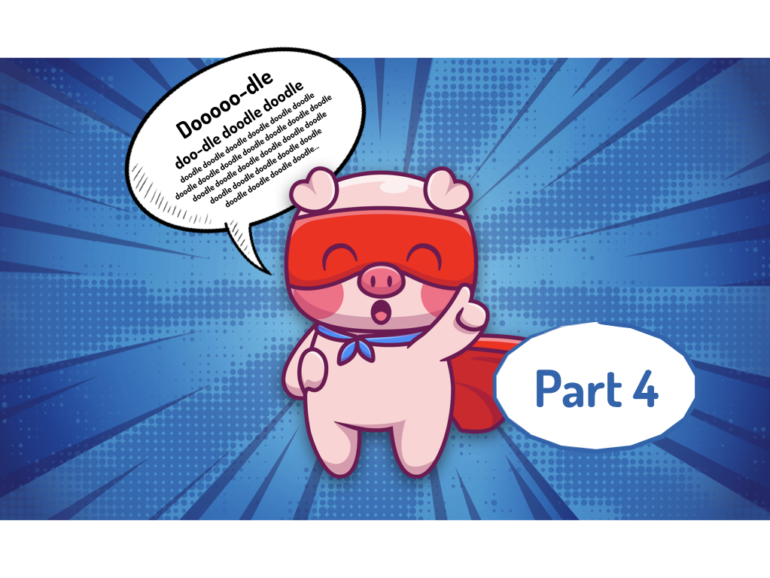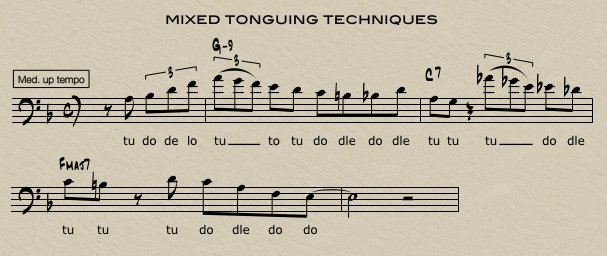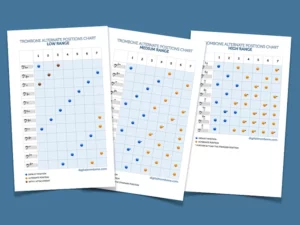
DOODLE TONGUING IN JAZZ
In the previous articles in this series, I have talked about the fundamental of doodle tonguing, basic and advanced exercises. Doodle tongue is the perfect solution for all jazz trombone players who want to be able to play fast and precise legato lines.
This time I want to share some patterns and exercises that I have found to be very useful. This is stuff that I use a lot when I play improvised jazz solos. Let´s get started!
MIXING TONGUING TECHNIQUES
Doodling is great, but in real life, you probably end up mixing both doodle tongue, single tongue, and natural legato with great results. In this bebop example, I have noted it the way I probably would play it. That doesn´t mean that there is only one solution, try it out and find out what is most comfortable for you. Basically, it is all about comfort, and making things as easy as possible to play for you.

PENTATONIC SCALES
Pentatonic scales are very useful in an improvised jazz solo. They are very playable on the trombone in most keys, and they sound great over many chords.
Try playing an E minor pentatonic scale over a Fmajor7 chord. Here you get the major 7, 9th, 3rd, #11, and 6th of the Fmajor7 chord served as a well-known pentatonic scale. Or try the E minor pentatonic scale over a Db7#9 chord (or a Db7altered chord). This time, the same pattern consists of the #9, #11, b13, 7th, and b9. That is a lot of juicy notes to get out of a simple pentatonic scale!
I suggest that you work on all the twelve pentatonic scales, playing them in different patterns. This is a real good doodle tongue workout at the same time! Try hitting different chords on the piano with the sustain pedal, and play a suitable pentatonic scale on the horn on top of it.
Examples:
Gbmajor7, Dbmajor7, or D7alt – use an Fm pentatonic scale
Bbmajor7, Fmajor7 or, Gb7alt – use an Am pentatonic scale
and so on…
You can find some useful pentatonic patterns here.
MAJOR SCALES
You need to be very familiar with all the major scales on the instrument. Using them to work on doodle tonguing is a good idea. The major scale is extremely useful when you are a jazz improviser. There are 4 trillion chords where it is an obvious choice in one of its modes: major, major7, 13, minor7, minor6, minor9, etc.

This pattern is one I use a lot, both for doodling and to make sure all the scales in all the modes are up to date. Full version here
ALTERED SCALES
The major scales are fundamental for a lot of improvised jazz solos, but they are also a bit plain, and without spicing things up a bit, it can be a bit boring with too many major scales. The altered scale has this little edge to it, that can help you put some color to your solo. The same altered scale can be used in many different chords with great results. Here are some examples, based on a C altered scale:
C7alt
Gb13#11
Dd- major7
Db-7, -9 (it works great, even though there are some “wrong” notes”)
Bb-7b5
To turn the altered scales into a killer doodle exercise, I suggest that you try this pattern. This way you will play all twelve keys, starting on every note in the scale in all keys.

See the full trombone altered scale exercise here in the member’s section
Previous articles in this series:
Trombone Doodle Tonguing – Part 1
Trombone Doodle Tonguing – Part 2
Trombone Doodle Tonguing – Part 3
PS. Get free access to way more than 1.000 pages of trombone sheet music and exercises for 14 days – read more here.





